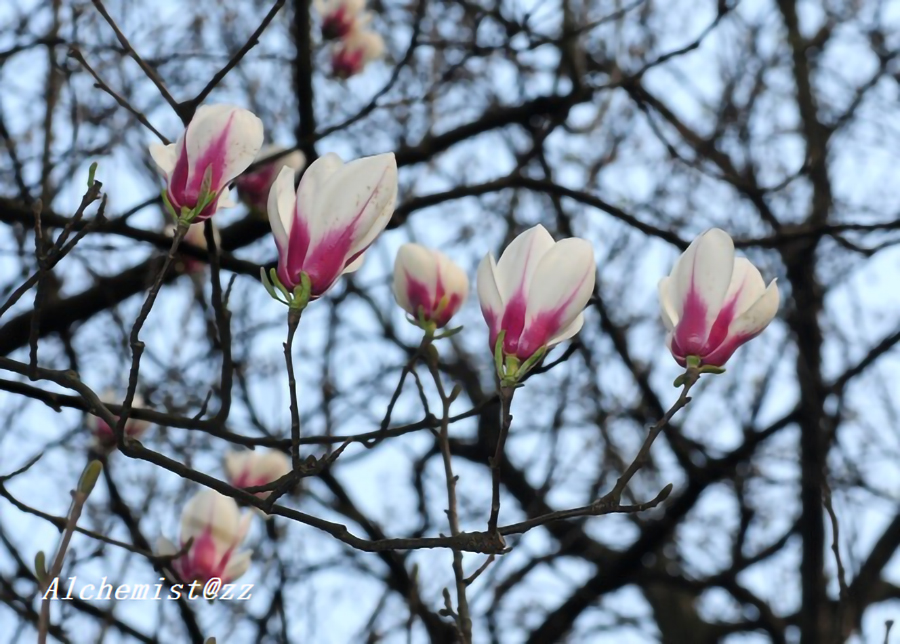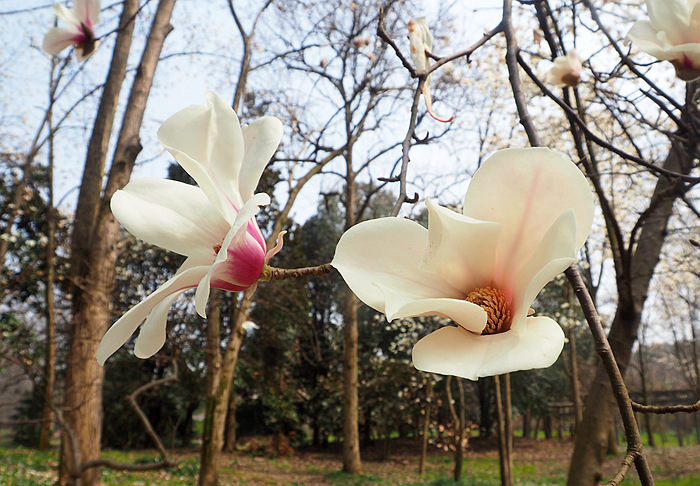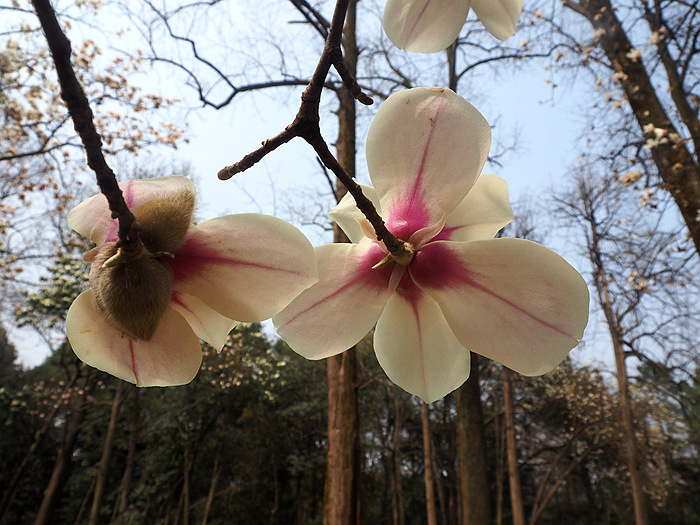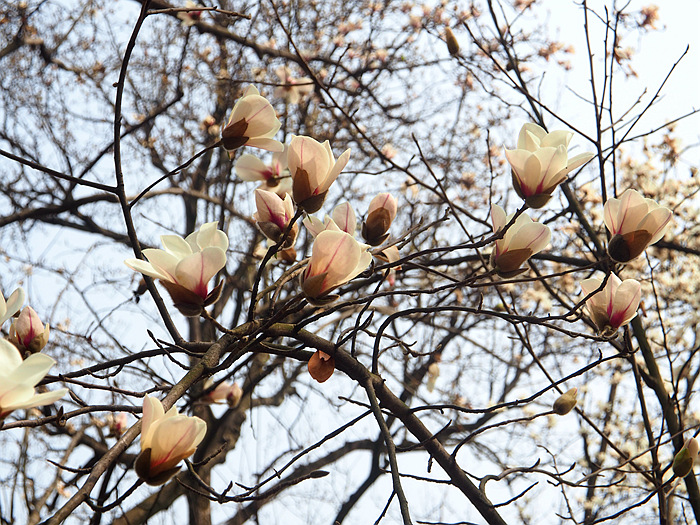黄山玉兰 Magnolia cylindrica
- Scientific Name: Magnolia cylindrica E.H.Wilson
- Ref: J. Arnold Arbor. 8:109. 1927
- Synonym: Yulania cylindrica
- English Common Name: Huangshan magnolia
- Chinese Common Name: 黄山玉兰 Huáng Shān yùlán
- Family: Magnoliaceae
- Genus: Magnolia
- Distribution: Forests; 700-1600 m. Anhui, Fujian, S Henan, Hubei, Jiangxi, Zhejiang.
- Photo: 03/17/2019, Hangzhou Botanical Garden
Trees, to 10 m tall. Bark grayish white, smooth. Young twigs, petioles, and leaf blade abaxial surfaces with pale yellow appressed trichomes. Old twigs purplish brown, bark with pungent odor when crushed. Stipular scar 1/6-1/3 as long as petiole. Petiole 0.5-2 cm, narrowly furrowed; leaf blade obovate, narrowly obovate, or obovate-oblong, 6-14 × 2-5(-6.5) cm, membranous, abaxially grayish green, adaxially green and glabrous, base nearly rounded to broadly cuneate, apex obtuse, acute, or caudate. Peduncle 1-1.5 cm, thick and strong, densely pale yellow long sericeous. Flowers appearing before leaves, erect. Flower buds ovoid, with pale grayish yellow to silvery gray long trichomes. Tepals 9; outer 3 tepals sepal-like, 1.2-2 × ca. 0.4 cm, membranous; tepals of middle and inner whorls white but base usually red, petal-like, obovate, 6.5-10 × 2.5-4.5 cm, base clawed; inner 3 tepals erect. Stamens ca. 1 cm; filaments pale red; connective exserted and forming a tip or mucro. Gynoecium green, cylindric-ovoid, ca. 1.2 cm. Fruit purplish red at first then turning dark purplish black, cylindric, 5-7.5 × 1.8-2.5 cm, pendulous; mature carpels connate and not curved. Seeds (without testa) brown, cordate, 7-10 × 9-11 mm, laterally compressed, adaxially broadly furrowed, base cuneate, apex V-shaped. Fl. Apr-Jun, fr. Aug-Sep. 2n = 76*. (Flora of China)


03/07/2016, Hangzhou Botanical Garden

03/07/2016, Hangzhou Botanical Garden

03/07/2016, Hangzhou Botanical Garden
-900x625.jpg)